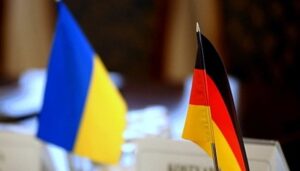
Federal Minister for Economic Affairs Katerina Reiche has promised Ukraine additional aid in the amount of €30 million for the energy sector, and this amount may still be increased, Tagesspiegel reported on Friday.
During her visit to Kyiv, Reiche told reporters that in early October, about 60% of Ukraine’s gas supply had been destroyed by Russian attacks.
“Russia’s goal is obviously to exhaust Ukraine. We will help restore the energy infrastructure,” she said.
Germany has already allocated a third of the total amount of EUR 390 million to the Energy Assistance Fund for Ukraine, and has promised to invest another EUR 30 million in Ukraine, with the possibility of further increases.
As reported, Reiche arrived in Kyiv on Friday to assess Ukraine’s needs for rebuilding its energy infrastructure after large-scale Russian attacks that severely damaged the power grid, Reuters reports. In addition to rebuilding the energy infrastructure, Reiche intends to focus on expanding German-Ukrainian defense cooperation.
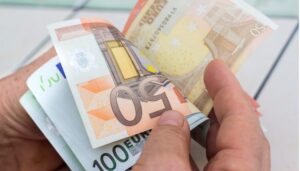
The majority of German citizens oppose providing Ukrainian refugees with universal social assistance (Bürgergeld), according to the results of a survey conducted by the Institute for Public Opinion Research (INSA) on behalf of Bild.
According to the published data, 66% of Germans surveyed do not believe that all Ukrainian refugees should receive full social assistance, while 17% supported this idea.
In addition, 62% of respondents said that men of conscription age from Ukraine should return home, 18% opposed this, and another 8% said they did not care.
According to the publication, approximately 700,000 Ukrainians living in Germany receive a total of around €6.3 billion in social assistance each year, and only one in three of them has a job.
Against this backdrop, political debates continue in Germany about the appropriateness of payments to newly arrived refugees. In the draft federal budget for 2026, the government plans to save about €1.5 billion, partly by changing the approach to payments for Ukrainians: instead of Bürgergeld, smaller benefits are planned for asylum seekers.
Experts note that this issue is becoming one of the key items on Germany’s political agenda: it concerns both social justice and the country’s immigration policy. The discussion about the role of Ukrainian refugees in German society reflects deeper sentiments about demographic challenges, integration, and support for European solidarity during wartime.
Source: http://relocation.com.ua/germans-oppose-payments-to-ukrainian-refugees-survey-shows/
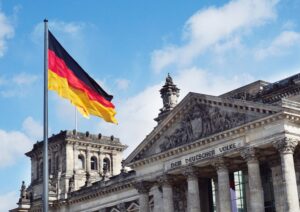
The number of people from Ukraine seeking protection in Germany has increased significantly in recent weeks, Die Welt reported Wednesday.
The publication writes that the lifting of the travel ban for Ukrainian men between the ages of 18 and 22 who are fit for military service has led to an increase in the number of asylum requests from this group.
“The number of applications has risen from around 100 per week before these provisions came into force to around 1,000 per week,” a spokeswoman for the Federal Interior Ministry said.
“It is impossible to assess at this point how temporary this phenomenon is,” she added.
According to the information, the total number of people from Ukraine in Germany increased during the summer. According to the Interior Ministry, 7,961 Ukrainians were distributed through the Free registration system in May, 11,277 in August and 18,755 in September. Unlike asylum seekers, protection seekers from Ukraine are granted a residence permit under Article 24 of the Residence Act, which entitles them to immediate access to the labor market and social services.
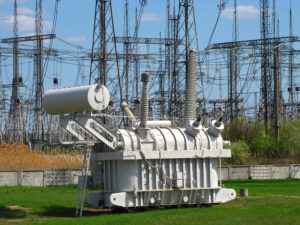
Imports of transformers, inductors, and chokes to Ukraine in January-September 2025 increased 2.1 times compared to the same period in 2024, reaching almost $777 million, according to statistics from the State Customs Service.
According to the published data, China remains the largest supplier of these products to Ukraine. During this period, $649.5 million worth of these products were imported from China (83.6% of all imports of these goods), while a year ago, $239.5 million worth of transformers and chokes were imported from this country (64.1%).
In addition, transformers were imported from Germany ($40.4 million) and Turkey ($17.9 million), while in January-September 2024, imports from Turkey amounted to $46.1 million, and from Germany – $9.9 million.
In particular, in September, supplies of this equipment to Ukraine increased by 42.6% compared to September 2024, to $95.9 million.
Since the beginning of this year, as reported, the volume of transformer imports has significantly exceeded last year’s figures—in particular, in January, their imports increased sixfold, but the growth rate gradually slowed down and, at the end of the first half of the year, was already 2.6 times higher than in January-June 2024.
According to the State Customs Service, Ukraine exported transformers, inductors, and chokes worth $23.8 million in the first nine months of this year, compared to $24.8 million in the same period last year, mainly to Germany, Hungary, and Poland.
As reported with reference to the State Customs Service, imports of transformers, inductors, and chokes to Ukraine in 2024 more than doubled compared to 2023, reaching $596.11 million, with imports from China increasing 2.5 times to $400.48 million.
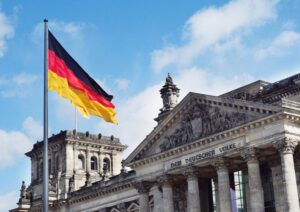
The Bundestag has decided by majority vote to cancel the so-called “accelerated” (turbo) citizenship procedure introduced in June 2024. 450 deputies voted in favor of the abolition, 134 against and 2 abstained.
Under the terms of the previous scheme, foreigners could apply for naturalization after only three years of residence upon demonstration of “special integration” – command of the German language at the C1 level, outstanding achievements in studies, volunteering or professional activities. However, only a few people have been able to take advantage of the scheme: in 2024, it was used to naturalize dozens of people in German states such as Rhineland-Palatinate and Baden-Württemberg, where 20 and 16 cases were registered respectively.
The “turbo citizenship” was originally initiated by the center-left SPD-Greens-SVD (“traffic light”) coalition, but after its collapse and the advent of the CDU/CSU coalition with the SPD, new Chancellor Friedrich Merz succeeded in getting this part of the reforms reversed. The coalition agreement retained the rest of the reforms – such as the right to dual citizenship for non-EU citizens and the reduction of the naturalization period from eight to five years – but the fast-track scheme was eliminated.
Despite the changes in civil policy, Germany remains a key host country for migrants and asylum seekers. According to the Federal Office for Migration and Refugees (BAMF), Germany received 230,000 initial asylum applications in 2024.
According to the UNHCR (at the end of 2023), there were almost 3 million refugees in Germany, of which more than 1.2 million Ukrainians who were granted temporary protection status.
The abolition of accelerated naturalization may be the government’s response to societal concerns about increased migration and pressure on social services, especially in the context of changes in migration policy and increased integration requirements.
http://relocation.com.ua/germany-withdraws-accelerated-naturalization-of-foreigners/

The volume of tractor imports to Ukraine in January-September 2025 amounted to $629.41 million, which is 6.2% more than in the same period of 2024 ($582.56 million), according to statistics from the State Customs Service. According to the published statistics, tractors were mainly imported from the US (20.7% of total imports of this equipment, or $130.2 million), China (almost 18% or $113 million), and Germany (16.7% or $105.3 million), whereas a year ago it was Germany (almost $90 million), China ($82.3 million), and the Netherlands ($78 million).
At the same time, imports from other countries in January-September decreased by 17.9% to $280.9 million, and their share in the total volume of tractor imports decreased to 44.6% from 57.8%.
In September this year, tractor imports to Ukraine increased by 23.6% compared to September 2024, to $73.7 million.
Since the beginning of this year, as reported, tractor imports to Ukraine have shown negative dynamics: in January, they were down by a third compared to January 2024, but by the end of the first half of the year, the figures were almost on par with last year’s.
According to statistics from the State Customs Service, $4.5 million worth of tractors were exported in January-September this year, mainly to Romania (28%), Belgium, and Germany, while last year’s exports for the same period amounted to $4.1 million, mainly to Moldova (28%), Kazakhstan, and the Czech Republic.
As reported, tractor imports to Ukraine in 2024 amounted to almost $784 million, 5.6% less than a year earlier, while exports amounted to $5.44 million compared to $5.74 million.